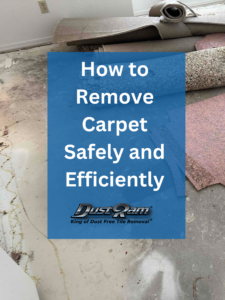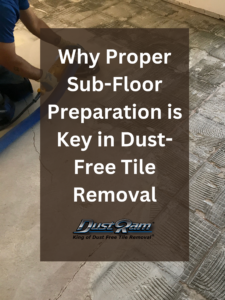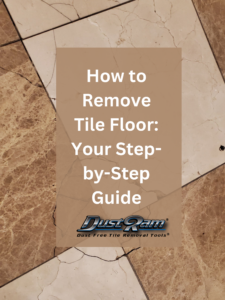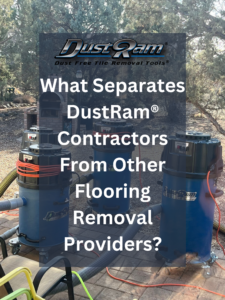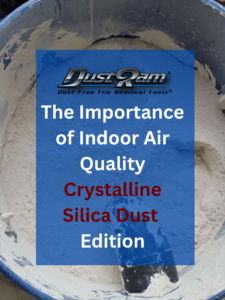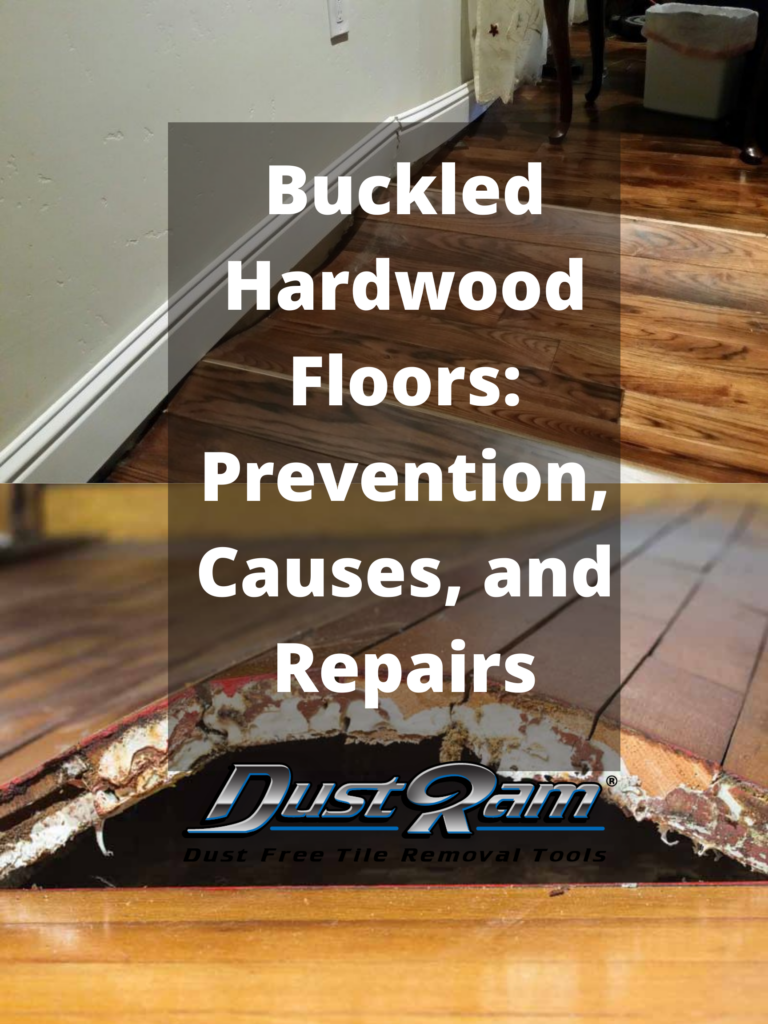
Photo Credits: Hardwood Floorings Mag & Construction Specifier
Buckling Hardwood Flooring: Causes, Prevention, and Repairs
Hardwood flooring can add elegance and a sense of luxury to any home. The undeniable allure of hardwood completely transforms and upgrades any space’s aesthetic appeal. But this flooring also requires a fair amount of attention and maintenance to prevent future damage, such as buckling. Follow along with DustRam® for the inside scoop on how to keep your hardwood floors from buckling!
Should I Replace Flooring Before Selling My Home?
Warning Signs of Damage
Wood and hardwood flooring, by its very nature is susceptible to the environment it is in. This can cause hardwood flooring to develop a life of its own and begin reacting to the atmosphere in which it lives. This can cause hardwood to buckle, show cracks or separation between boards, turn up at the edges to cause cupping, rise in the middle and lead to crowning, or cause the boards to lift and get detached from the subfloor.
Lifting indicates extreme buckling and occurs only when the hardwood floors are flooded with water. Cupping, crowning, and cracks on the other hand are the more common signs that can be an effect of a damp environment.
What Are the Signs It’s Time to Replace Your Flooring?
Different Elements that Cause Hardwood to Buckle
Water
Hardwood floors do not like water. Hardwood is a naturally porous material that easily entraps moisture, causing damage to your floors. When exposed to water, hardwood begins to swell so that the added moisture can be accommodated. This expanding of the floor and shrinking when the moisture leaves the hardwood can lead to its warping and buckling.
Humidity
Humidity is just another name for water in the air and can have the same effect on hardwood that water has. This can depend on the weather and its ability to change the conditions inside a home through open doors and windows. Where homes are near the sea or where geography causes high humidity conditions to be prevalent in the air, hardwood floors remain susceptible to buckling.
Changes in Temperature
Where the weather is constantly changing from hot to cool in a repetitive cycle, the wood will expand when it is hot and contract when it is colder, causing the boards to buckle and warp.
Defects in Installation
A hardwood floor that is not properly installed will have openings and cracks that allow the moisture or even water from any spills or occasional mopping to get into the wood and lead to buckling or warping of the floor. This may not happen if you are careful to select the right installer who has experience and a reputation for good quality work.
Sub-floor Problems
Sub-floors can be damp due to the lack of dampness barriers in foundations, or even if they are not allowed to dry out properly before the hardwood floor is installed. This dampness can find its way in to the hardwood boards and cause them to warp, buckle, or lift.
If you are removing flooring in your home, make sure to choose a company that provides top-rated results. Our team, at DustRam®, leaves your subfloor better prepared for your flooring installation. Contact us today for a free flooring removal quote.
Ignoring Acclimatization
It is a normal practice to allow the wooden boards that constitute your hardwood flooring to get familiar with the temperature and humidity prevalent in a home before they are installed. This process can take up to two weeks, but there is the danger of the boards drying or absorbing moisture, which can lead to the defects that we are trying to prevent.
The timing is best left to the professionals and recommendations of manufacturers of the hardwood flooring but is something that must be insisted on, even though it may make you a little impatient for the installation work to start.
The Difference Between LVT And VCT Flooring
Repairs to Buckled Wood Flooring
One of the first things to do, when you notice signs of buckling and warping in your hardwood floor is to determine the extent of the damage. Minimal buckling can even be repaired by just placing a heavy weight on the buckled area and forcing it to settle back into its space.
You also need to ensure that area that is buckled is dry and have any excess moisture removed. Do this by using fans after any excess moisture has been removed by some absorbent material, like a towel. You can also use a dehumidifier for at least 24 hours in places where the damage is minor, and often you will find that boards go back to their normal position, and you will see no signs of buckling or warping.
Major damage to a floor, that has buckled in many places may require replacing the badly damaged boards. Here the major difficulty can come from finding boards that match your existing floor.
Hardwood floors where the boards have tongue and groove joints will resist the buckling better because the boards become like one big sheet, but at the same time, any repairs to be carried out here will require the services of professionals.
LVT vs LVP: Which Flooring Type Is Better?
Avoiding the Formation of Buckled Flooring
Water, as we have said, is the major cause of buckling and warping of hardwood flooring. So, make it a point to clean up any spills of any liquid immediately, before the hardwood starts to absorb it. Make sure that there are no places on the hardwood floor where leaks or excess water can lead to the floor absorbing water.
So, if you have hardwood flooring, such spots can be where kitchen sinks and washing machines are installed. If you have a crawl space, make sure that it has proper moisture barriers. If you are in the habit of mopping your floors, make sure that you use the least amount of water, and ensure that the floor is dried after you have finished your cleaning operations. Use a fan or dehumidifier if necessary.
Other Damages to Hardwood Floors
Hardwood floors can also be damaged if they are constantly walked over with high-heeled shoes or ones with cleats. If you cannot avoid this altogether, make sure that high-traffic areas are covered by a carpet or rug. Hardwood floors can also be damaged by the use of the wrong cleaners. See that you are using the right cleaners to prevent any damage.
Proper Subfloor Preparation Before Laying Down Hardwood Flooring
Before you install a hardwood floor make sure that it is suitable for your home. Evaluate the temperature and humidity in your home and do this over a long period, so that you take varying weather conditions into account. If your floor needs to be completely removed and replaced, make sure that you engage the services of an agency that guarantees dust-free removal.
For the latest news and trends make sure to visit our blog. If you would like to learn more about our dustless flooring removal services for damaged or outdated flooring, contact us today. We provide free project estimations.

